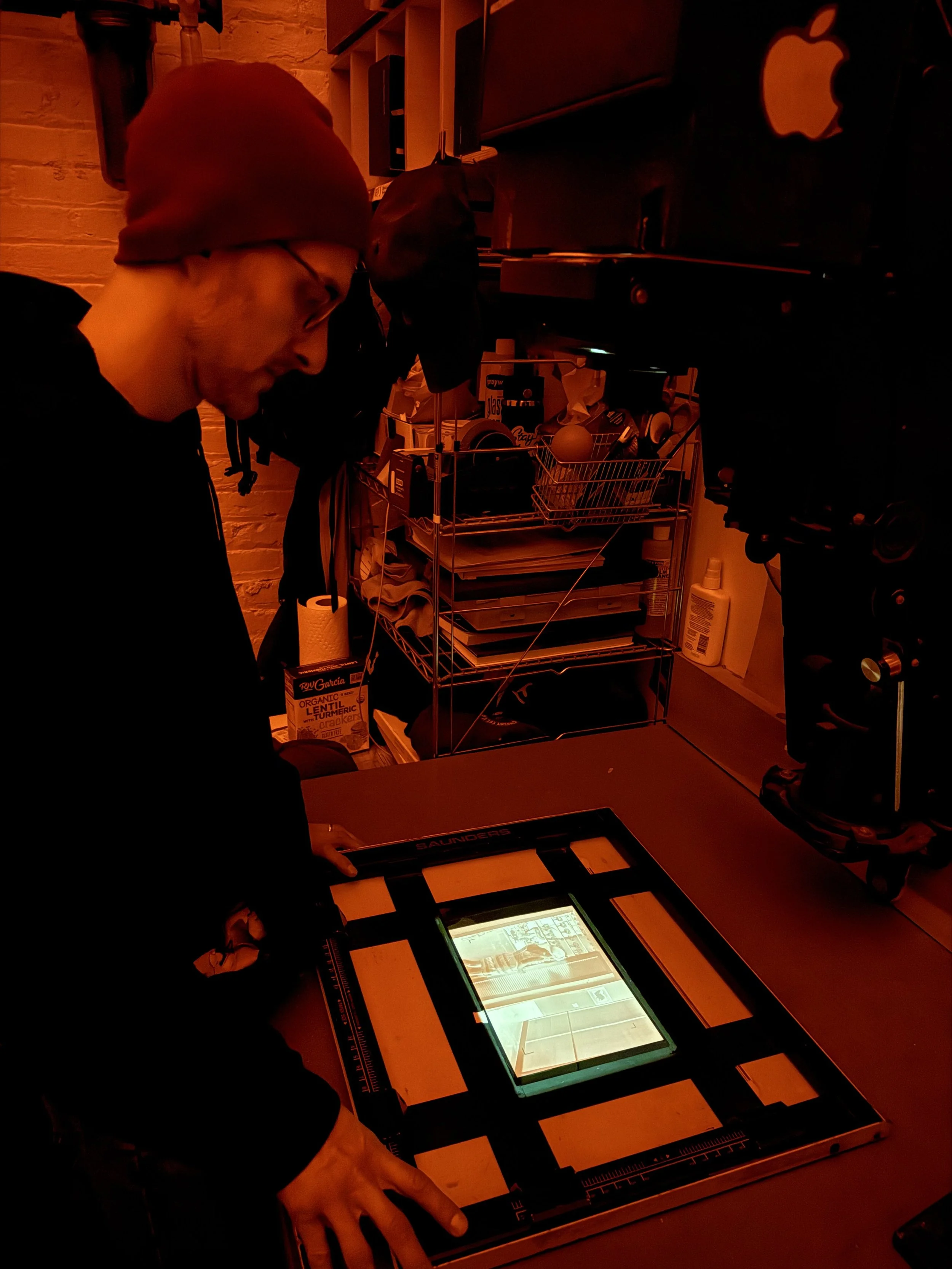Chrsitmas Card
Our mission is two-fold.
First, we aim to systematize and streamline the reprinting of Cindy Sherman photographs using the best available technologies, and, in doing so, to create a framework for sustaining the legacy of artists working in the medium of photography.
Next, we aim to publish the Cindy Sherman Catalogue Raisonné for the benefit of scholars, curators, collectors, and anyone interested in learning about the artist’s influential body of work.

Reprinting and Photo Conservation
An inside look at the Legacy Project's approach to conservation with NY Photograph Conservation and Griffin Editions.
Each original print is carefully handled, studied, and assessed at J. Luca Ackerman in Long Island City, before being sent over to Griffin Editions in Gowanus, where the new, revitalized print is created.
At this stage, both works are examined side by side to note the differences in color and material composition, with factors such as age, environment, and prior handling practices taken into account for the original.
All of this information is then compiled as data, which remains relevant as it helps to better understand the effects of these factors on older Cindy Sherman works, and thus more accurately assess each new commission that comes in.
Reprinting Gelatin Silver Prints
All B&W reprints are created by hand, by a master printer at Griffin Editions in collaboration with Cindy Sherman’s studio. Hand-made prints are traditional black-and-white photographs made using a darkroom process that applies light-sensitive silver salts to a paper base. This method was the primary way to make B&W photos before digital photography and is still valued today for its archival quality, rich tonality, and the unique characteristics of being printed by hand by an artist.
The handmade process
Negative to print: The process starts with a film negative, which is placed in an enlarger in a darkroom to project and focus the image onto a piece of light-sensitive paper.
Test strips: Photographers use test strips to determine the correct exposure time, as the silver grains react to light to create different tones.
Developing: The exposed paper is submerged in a developing solution, which causes the silver grains to react and make the latent image visible.
Fixing: The print is then placed in a fixer to remove excess silver and permanently fix the image.
Washing: Finally, the print is thoroughly washed to remove all residual chemicals, ensuring its longevity.
Finishing: After washing, prints may undergo toning for added permanence and aesthetic effects or require final retouches, such as "spotting," to remove imperfections.
Reprinting an Untitled Film Still print to address discoloration and fading
My mother, Joan Davidow, purchased Untitled Film Still #49 at the 1988 Dallas Museum of Art Beaux Arts Ball fundraiser. As the art critic for KERA public radio in Dallas in the late 1980s and early 1990s, she interviewed Cindy Sherman when the Dallas Museum of Art first exhibited her work. In the late 1990s, she gifted the work to me to add to my then-nascent photography collection. Its presence in my home has been treasured, as the first addition to the collection of a late-20th Century work and a cherished reminder of the gritty New York I visited often throughout the 1980s.
As a woman who shared with Dallas-Fort Worth listeners passionate and energetic reviews of local art happenings, and later as a curator at museums and art spaces, it seems fitting to me my mother was drawn to Cindy Sherman’s oeuvre.
The print shifted over the years despite the archival framing. I am grateful for the opportunity from CSLP to reprint the work. CSLP and Griffin Editions demonstrated great care for the work and the process, which was surprisingly straightforward and rather effortless.
M. Davidow
November 2025





